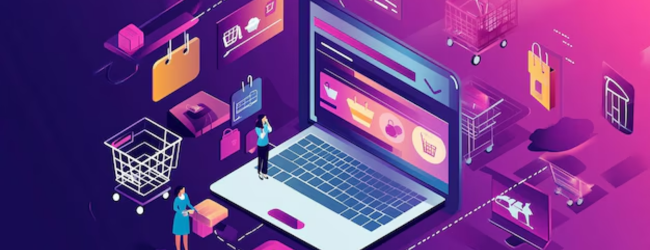Table of contents
- Why Manufacturing Software is Crucial for Small Businesses
- 1. Enterprise Resource Planning (ERP) Systems
- 2. Inventory Management Software
- 3. Production Planning and Scheduling Software
- 4. Quality Management Systems (QMS)
- 5. Customer Relationship Management (CRM) Systems
- 6. Supply Chain Management (SCM) Software
- 7. Computer-Aided Design (CAD) Software
- 8. Manufacturing Execution Systems (MES)
- 9. Asset Maintenance Software
- 10. E-commerce Integration Software
- Need Expert Guidance?
- Conclusion
- Frequently Asked Questions (FAQs)
Running a small manufacturing business in today’s competitive landscape requires efficiency, agility, and smart resource management. That’s where the right manufacturing software comes in. In 2025, leveraging technology is no longer optional; it’s essential for survival and growth. This article dives into the 10 best software solutions that can transform your operations, boost productivity, and drive your business forward.
Why Manufacturing Software is Crucial for Small Businesses
Small manufacturing businesses often face unique challenges, including limited resources, tight budgets, and the need to compete with larger, more established companies. Manufacturing software helps level the playing field by:
- Streamlining Operations: Automating processes like production planning, inventory management, and order fulfillment.
- Improving Efficiency: Reducing manual errors and saving time with integrated systems.
- Enhancing Visibility: Providing real-time insights into production, inventory, and sales.
- Reducing Costs: Optimizing resource utilization and minimizing waste.
- Improving Customer Satisfaction: Ensuring timely delivery and accurate order fulfillment.
Let’s explore the top 10 software solutions that can make a significant difference for your small manufacturing business in 2025:
1. Enterprise Resource Planning (ERP) Systems

Comprehensive ERP systems integrate various business processes, including production, inventory, finance, and sales, into a single, unified platform.
- Why this Idea: Centralized data management, improved decision-making, and enhanced operational efficiency.
- Licenses Required: Typically subscription-based, with varying tiers based on features and user count.
- Investment Required: Moderate to high, depending on the complexity and scale of the system.
- How to Sell: Highlight the long-term cost savings and efficiency gains.
- Any other Requirements: Requires thorough implementation and training.
- Challenges in the Idea: Implementation complexity, data migration, and user adoption.
- How to overcome the Challenges: Phased implementation, comprehensive training, and dedicated support.
- Example: A small furniture manufacturer uses an ERP system to track raw materials, manage production schedules, and handle customer orders, all within a single platform, reducing errors and improving delivery times.
2. Inventory Management Software

Software dedicated to tracking and managing inventory levels, ensuring optimal stock levels, and preventing stockouts or overstocking.
- Why this Idea: Improved inventory accuracy, reduced carrying costs, and enhanced order fulfillment.
- Licenses Required: Subscription-based or one-time purchase, depending on the vendor.
- Investment Required: Low to moderate, depending on the features and scale.
- How to Sell: Emphasize the reduction in inventory costs and improved order accuracy.
- Any other Requirements: Integration with barcode scanners and other inventory tracking tools.
- Challenges in the Idea: Real-time data accuracy, integration with existing systems.
- How to overcome the Challenges: Regular inventory audits, robust data synchronization.
- Example: A small electronics manufacturer uses inventory management software to track components and finished products, automatically reordering items when stock levels reach a certain threshold, preventing production delays.
3. Production Planning and Scheduling Software

Tools that help plan and schedule production activities, optimize resource allocation, and ensure timely delivery.
- Why this Idea: Improved production efficiency, reduced lead times, and enhanced resource utilization.
- Licenses Required: Subscription-based, with varying tiers based on features and user count.
- Investment Required: Moderate, depending on the complexity and scale.
- How to Sell: Highlight the ability to meet deadlines and optimize resource allocation.
- Any other Requirements: Integration with shop floor data collection systems.
- Challenges in the Idea: Handling unexpected changes in demand or production issues.
- How to overcome the Challenges: Flexible scheduling algorithms, real-time data updates.
- Example: A small bakery uses production planning software to schedule baking batches, ensuring that all orders are fulfilled on time while minimizing waste.
💡 Pro Tip: If you want to start a home-based business but have too many doubts, connect with a home-based business expert from Boss Wallah for guidance – https://bw1.in/1116
4. Quality Management Systems (QMS)

Software that helps maintain and improve product quality, ensure compliance with standards, and manage quality control processes.
- Why this Idea: Reduced defects, improved customer satisfaction, and enhanced regulatory compliance.
- Licenses Required: Subscription-based or one-time purchase, depending on the vendor.
- Investment Required: Moderate, depending on the features and industry requirements.
- How to Sell: Emphasize the reduction in defects and improved brand reputation.
- Any other Requirements: Compliance with industry-specific standards and regulations.
- Challenges in the Idea: Ensuring consistent data entry, maintaining accurate records.
- How to overcome the Challenges: Standardized data entry procedures, regular audits.
- Example: A small medical device manufacturer uses a QMS to track and document all quality control processes, ensuring compliance with FDA regulations and minimizing product defects.
5. Customer Relationship Management (CRM) Systems

Software that helps manage customer interactions, track sales leads, and improve customer service.
- Why this Idea: Enhanced customer relationships, improved sales conversion rates, and increased customer loyalty.
- Licenses Required: Subscription-based, with varying tiers based on features and user count.
- Investment Required: Low to moderate, depending on the features and scale.
- How to Sell: Highlight the ability to improve customer satisfaction and increase sales.
- Any other Requirements: Integration with marketing automation tools.
- Challenges in the Idea: Ensuring accurate data entry, keeping data up-to-date.
- How to overcome the Challenges: Regular data cleansing, automated data entry.
- Example: A small custom apparel manufacturer uses a CRM to track customer orders, manage communication, and provide personalized service, leading to repeat business and positive reviews.
ALSO READ | Accounting for Retail Business | Everything You Need to Know in 2025
6. Supply Chain Management (SCM) Software

Tools that help manage the flow of goods and services from suppliers to customers, optimizing logistics and reducing costs.
- Why this Idea: Improved supply chain visibility, reduced lead times, and enhanced collaboration with suppliers.
- Licenses Required: Subscription-based, with varying tiers based on features and scale.
- Investment Required: Moderate to high, depending on the complexity of the supply chain.
- How to Sell: Emphasize the reduction in logistics costs and improved delivery times.
- Any other Requirements: Integration with transportation management systems.
- Challenges in the Idea: Managing disruptions, ensuring data accuracy across multiple parties.
- How to overcome the Challenges: Real-time tracking, contingency planning.
- Example: A small food processing company uses SCM software to track raw materials from suppliers, manage transportation, and ensure timely delivery to customers, minimizing waste and delays.
7. Computer-Aided Design (CAD) Software

Tools that help design and model products, create technical drawings, and simulate product performance.
- Why this Idea: Improved product design accuracy, reduced prototyping costs, and faster time to market.
- Licenses Required: Subscription-based or one-time purchase, depending on the vendor.
- Investment Required: Moderate to high, depending on the features and complexity.
- How to Sell: Highlight the ability to create innovative designs and reduce prototyping costs.
- Any other Requirements: Powerful computer hardware.
- Challenges in the Idea: Learning curve, compatibility with other design tools.
- How to overcome the Challenges: Training programs, standardized file formats.
- Example: A small metal fabrication shop uses CAD software to design custom parts, create technical drawings, and simulate the performance of finished products before production.
8. Manufacturing Execution Systems (MES)

Software that monitors and controls production processes in real-time, providing visibility into shop floor activities.
- Why this Idea: Improved production efficiency, reduced downtime, and enhanced quality control.
- Licenses Required: Subscription-based or one-time purchase, depending on the vendor.
- Investment Required: Moderate to high, depending on the complexity and scale.
- How to Sell: Emphasize the real-time visibility and improved production efficiency.
- Any other Requirements: Shop floor data collection systems, integration with ERP.
- Challenges in the Idea: Data integration, ensuring accurate shop floor data collection.
- How to overcome the Challenges: Standardized data formats, automated data collection, and robust integration tools.
- Example: A small plastic injection molding company uses an MES to track production output, monitor machine performance, and identify bottlenecks in real-time, allowing for immediate adjustments and improved efficiency.
9. Asset Maintenance Software

Tools that help manage and maintain manufacturing equipment, ensuring optimal performance and minimizing downtime.
- Why this Idea: Reduced equipment downtime, extended asset lifespan, and lower maintenance costs.
- Licenses Required: Subscription-based or one-time purchase, depending on the vendor.
- Investment Required: Low to moderate, depending on the features and scale.
- How to Sell: Highlight the reduction in downtime and maintenance costs.
- Any other Requirements: Sensors for real-time equipment monitoring.
- Challenges in the Idea: Accurate predictive maintenance, data analysis.
- How to overcome the Challenges: Implementing predictive maintenance algorithms, integrating with IoT devices.
- Example: A small metalworking shop uses asset maintenance software to schedule preventive maintenance, track equipment performance, and predict potential failures, reducing unexpected downtime and extending the lifespan of their machines.
10. E-commerce Integration Software

Tools that seamlessly connect manufacturing operations with online sales platforms, streamlining order fulfillment and inventory management.
- Why this Idea: Expanded market reach, improved order accuracy, and enhanced customer experience.
- Licenses Required: Subscription-based, depending on the platform and features.
- Investment Required: Low to moderate, depending on the integration complexity.
- How to Sell: Emphasize the ability to reach a wider customer base and streamline online sales.
- Any other Requirements: API integration with e-commerce platforms.
- Challenges in the Idea: Real-time inventory synchronization, handling order variations.
- How to overcome the Challenges: Robust API integrations, automated inventory updates.
- Example: A small custom furniture manufacturer uses e-commerce integration software to connect their online store with their production and inventory systems, ensuring accurate order fulfillment and real-time inventory updates.
Need Expert Guidance?
Starting a business can be challenging, but you don’t have to do it alone! At Boss Wallah, our 2,000+ business experts are ready to provide valuable insights and guidance. Whether you need help with marketing, finance, sourcing, or any other area of any business, our business experts are here to help you succeed- https://bw1.in/1116
Confused about Which Business to Start?
Want to start your own business but unsure which one to choose? Explore Boss Wallah, where you’ll find 500+ courses by successful business owners, featuring practical, step-by-step guides on starting and growing various businesses.
Find your perfect business idea today – https://bw1.in/1111
Conclusion
Investing in the right manufacturing software is crucial for the success of small businesses in 2025. By implementing these solutions, you can streamline operations, improve efficiency, and gain a competitive edge. Consider your specific needs and budget to choose the software that best fits your business. Remember, the right software is an investment in your business’s future.
Frequently Asked Questions (FAQs)
- What is the most essential manufacturing software for a small business?
An ERP system is often considered essential as it integrates various business processes into a single platform. However the most important software depends on your business. Inventory management is also very important.
- How much does manufacturing software typically cost?
Costs vary widely depending on the software’s features, scale, and licensing model. Expect subscription-based pricing or one-time purchases, ranging from a few hundred to several thousand dollars.
- Can small businesses afford ERP systems?
Yes, many ERP vendors offer scaled-down versions or cloud-based solutions tailored to small businesses’ budgets.
- What are the benefits of using inventory management software?
Improved inventory accuracy, reduced carrying costs, and enhanced order fulfillment.
- How can production planning software help my business?
It helps optimize resource allocation, reduce lead times, and ensure timely delivery.
- Is quality management software necessary for small manufacturers?
Yes, it helps maintain product quality, ensure compliance, and reduce defects, which are crucial for customer satisfaction and regulatory compliance.
- What is the role of MES in manufacturing?
MES monitors and controls production processes in real-time, providing visibility into shop floor activities and improving efficiency.
- How can e-commerce integration software benefit my manufacturing business?
It streamlines online sales, improves order accuracy, and expands market reach by connecting manufacturing operations with online platforms.


